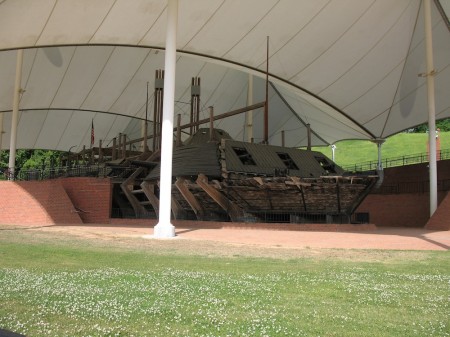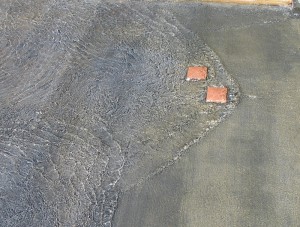
White is the color of marriage, in western countries at least, but for the Hindus and Chinese the color of marriage is red. Information is Beautiful has the wonderful quick reference graphic above.
Middle and High School … from a Montessori Point of View

White is the color of marriage, in western countries at least, but for the Hindus and Chinese the color of marriage is red. Information is Beautiful has the wonderful quick reference graphic above.
We’ve had quite a number of Langston Hughes‘ poems recited in the mornings. This morning it was “I, too, sing America” and I ran into the above YouTube video, narrated by the author (the narration can be found at The Poetry Archive).
“I, too, sing America” was written in response to Walt Whitman’s “I, Hear America Singing” (Gonzales, date unknown), which ties into the story of advancing civil rights in the United States.

Considering child labor today, it’s worth noting how extensive it was in the past. The Library of Congress is an excellent source for public domain images, and has available the amazing photographs of child workers taken by Lewis Wickles Hine for the National Child Labor Committee.

Four hours away, Vicksburg, MS. is just within reach for an immersion trip so, since we were in the area, I scoped it out for a future trip. Vicksburg was the final town to fall before the Union could control the Mississippi River and split the Confederacy into two, so it’s historically important. The Vicksburg National Military Park is chock full of monuments and markers that give a good idea about the chaos and carnage of the battle for the town, and even a chance to observe practical application of simple machines and steam engines.
The park could complement Shiloh and Corinth quite nicely since Vicksburg’s importance was because of its control of transportation routes, just like with Corinth. It also has the salvage of the USS Cairo, an ironclad sunk during the Civil War. Much of he Hull is still missing so it’s a wonderful chance to see all the mechanisms and engines in a steam powered ship.

What I found most interesting, however, were the old watermill and farming equipment at Grand Gulf Military Park, about 45 minutes south of Vicksburg. They seem almost in working order, and if you’ve been discussing simple machines, as we have, it’s a great opportunity to see how they were applied in real-life.

The watermill is quite picturesque, making it a great subject for sketching or drawing. I like to combine art and science in this way when possible. Grand Gulf also has a small, submarine used by bootleggers during prohibition which is quite the curious piece of engineering.
[googleMap name=”Grand Gulf Military State Park” description=”Watermill and camping” width=”400″ height=”300″ mapzoom=”8″ mousewheel=”false”]12006 Grand Gulf Rd, Port Gibson, MS[/googleMap]
An excellent Project Song article on NPR follows Moby and singer/songwriter Kelli Scarr as they write and record a song over the course of two days. The song itself, called Gone To Sleep, is quite good but the article, where they follow the artists in the process of creation is quite fascinating.
The Guardian newspaper put together an excellent collection nature photographs for auction for an Earth Day charity. I particularly like the pictures from the Franklin River, south-west Tasmania, Australia and Stone Canyon, Arizona/Utah, U.S.A.. Apart from the wonderful composition and spectacular lighting, I like the effort and meaning behind these images.

According to the Guardian, the Franklin River image was instrumental in preventing the flooding of the river for an hydroelectric dam. The Stone Canyon picture was used to try to have the area declared a national monument. I particularly appreciate the effort of Jack Dykinga, who took the Stone Canyon photo. He hiked up the slot canyon at 3:30 am in order to get the photograph at dawn; with their softer light and reddish tints, sunrise and sunset are the best times for photography.

The Memphis to Charleston line was the only railroad that linked the East Coast of the Confederacy to the fertile Mississippi River Valley. At a time when the fastest way to move troops, supplies and commerce was by river or rail, the Memphis and Charleston railroad was essential (this was well noted in Robert Black’s “The Railroads of the Confederacy”). Cutting the railroad was an important objective of the Union. Cutting it at Corinth Mississippi would also cut the Mobile and Ohio Railroad line which linked the north and south of the Confederacy. Thus the Battle of Shiloh, where the Union could disembark its armies using the Tennessee River, and soon after, the Battle of Corinth.
The Civil War Interpretive Center in Corinth (this is also a good reference) does a nice job of presenting the details of the battles for the town, and their video presentation, with different images projected on multiple screens in a circular room was quite good (though there was a lot of information and you did not know quite which screen to focus on, so some students had trouble keeping track of it all).

The most interesting part of the center is the Stream of American History which is a wonderful place to learn about metaphors. The stream starts with a fountain that overflows through 13 notches cut in the rim of the basin into a shallow water course that gradually widens as more states are added to the U.S. In the first reach of the stream there are impediments in the paved stream bed that create turbulence, harbingers of the war to come (they create nice standing waves which is an additional point in their benefit).
When the stream gets to its main focus, the civil war, large granitic blocks, cut into prisms and labeled with the names of the battles, break the stream into two before it finally merges again as it reaches the reflecting pool.
I threw my students at the Stream without telling them what it was. The only hint I gave was that it was a “large metaphor”. There were enough clues that they could figure it out. They wandered around it individually, with their pencils and notepaper for 15 minutes (I required that they write down their interpretation, then we got them together to pool their thoughts.
The stream is a very nice puzzle, and the National Park Service has a good key (pdf). It was a good way to end our immersion trip, and it gave the students something to think about on the long drive home.
[googleMap name=”Corinth Civil War Interpretive Center” width=”400″ height=”350″ mapzoom=”4″ mousewheel=”false” directions_to=”false”]501 West Linden Street, Corinth, MS[/googleMap]
A beautiful intersection of art, science and abstract thinking. An assemblage of photos compressed into a circular graph by Fernanda Viégas and Martin Wattenberg.